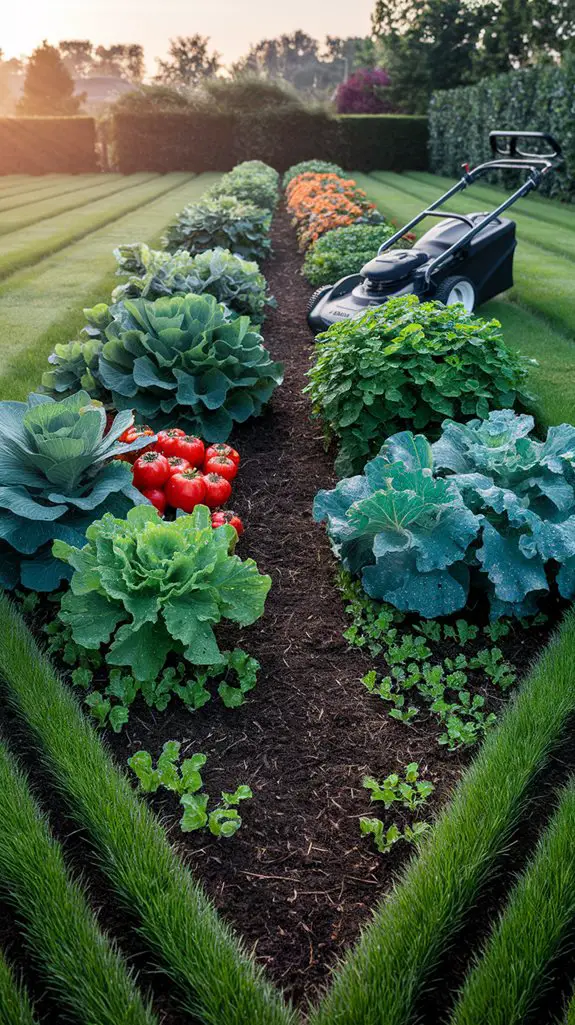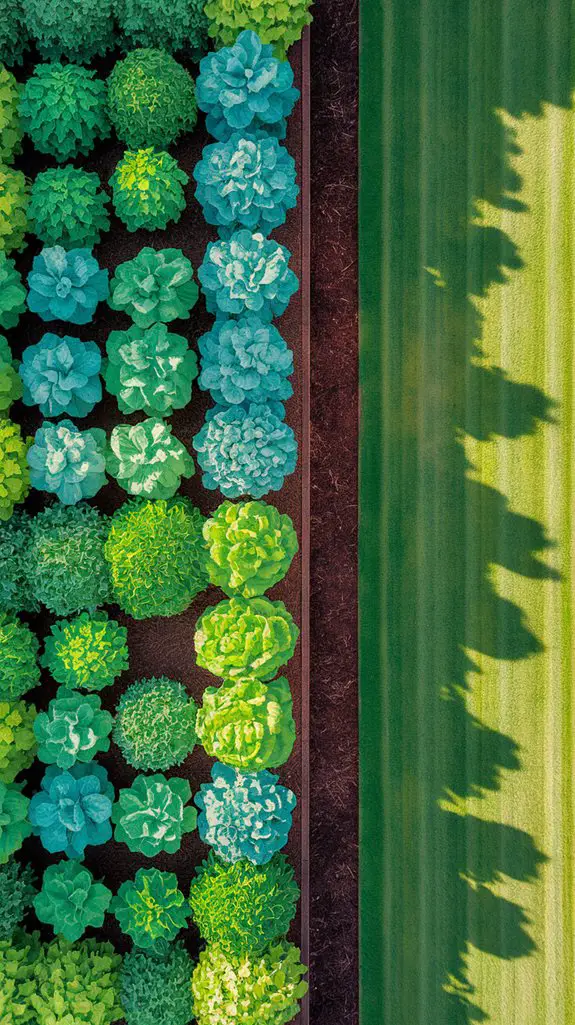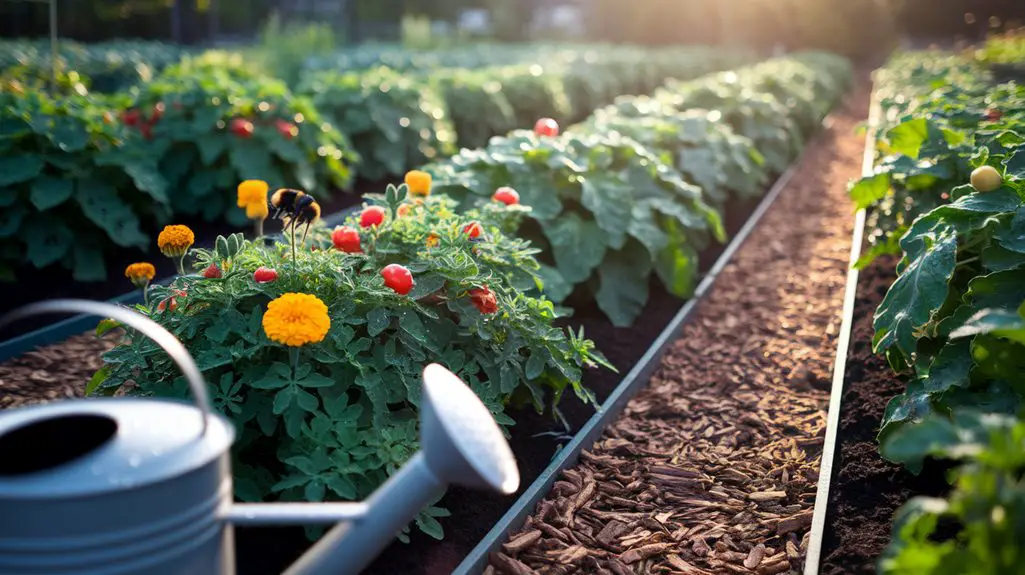Did you know that 35% of homeowners report conflicts between their lawns and vegetable gardens? You’re not alone in your struggle to balance a lush green yard with productive garden beds. Your lawn care practices directly impact vegetable yields, nutrient availability, and pest management—often in ways you haven’t considered. The three essential techniques we’ll examine can transform this relationship from competitive to complementary, ensuring both areas thrive without compromising the other.
Selecting the Right Grass Types Near Vegetable Beds
When planning a vegetable garden alongside your lawn, selecting the right grass types for adjacent areas becomes essential for both aesthetics and productivity.
Choose low-maintenance fescues or fine-textured bentgrass that won’t aggressively spread into your vegetable beds. These varieties require less fertilizer, reducing nutrient competition with your vegetables.
Consider buffalo grass or other drought-resistant varieties in drier climates, as they’ll demand less water that might otherwise be directed to your vegetables.
Avoid high-maintenance Kentucky bluegrass near gardens, as its water and fertilizer requirements can create resource competition.
For separation areas, install physical barriers like metal edging or create mulched buffer zones between lawn and vegetables. This prevents grass rhizomes from invading your growing space while maintaining a clean, defined landscape aesthetic. Additionally, ensure that the selected grass types are suitable for shaded areas to promote healthy growth without compromising your vegetable garden’s productivity.
Proper Mowing Techniques to Support Garden Health

Maintaining appropriate mowing practices around your vegetable garden greatly impacts both lawn and garden health. When you mow correctly, you’ll reduce weed pressure, prevent grass clippings from smothering seedlings, and create beneficial microclimates for your vegetables.
- Set your mower height to 3-3.5 inches tall to shade out weed seeds and maintain deeper root systems.
- Use a mulching blade to finely shred clippings, returning valuable nitrogen to the soil without creating mat-like debris.
- Mow when grass is dry to prevent clumping and fungal disease spread between lawn and garden areas.
- Direct discharge away from garden beds, or collect clippings when mowing perimeters adjacent to vegetable plantings.
For sloped areas near gardens, mow horizontally along contours to reduce runoff and soil erosion. Additionally, maintaining proper mowing practices can enhance soil health and support overall garden growth.
Natural Fertilization Methods for Lawn-Garden Boundaries

The shift zone where your lawn meets vegetable gardens presents unique fertilization challenges that require strategic natural approaches.
You’ll need to create buffer zones using compost tea applications that nourish both ecosystems without chemical drift.
Apply alfalfa meal or fish emulsion directly to these boundary areas in early spring and mid-summer. These slowly release nutrients while improving soil structure.
For lawn edges, incorporate clover strips that naturally fix nitrogen and reduce fertilizer needs by up to 30%.
When applying compost, focus on a tapered distribution—heavier near vegetables, lighter toward turf. This creates a nutrient gradient that satisfies both systems.
Use grass clippings from untreated lawn sections as mulch for garden boundaries to recycle nutrients while suppressing weeds that compete at these critical junctures. Additionally, consider implementing eco-friendly practices that can enhance both the health of your lawn and vegetable garden.
Conclusion
By implementing these lawn care strategies, you’ll create a harmonious environment where both your lawn and vegetables thrive together. Research shows that properly maintained buffer zones can reduce weed pressure by up to 80% while improving water retention. Don’t view your lawn as competition for your garden—instead, transform it into a complementary ecosystem that enhances soil health and maximizes your vegetable yields year after year.




